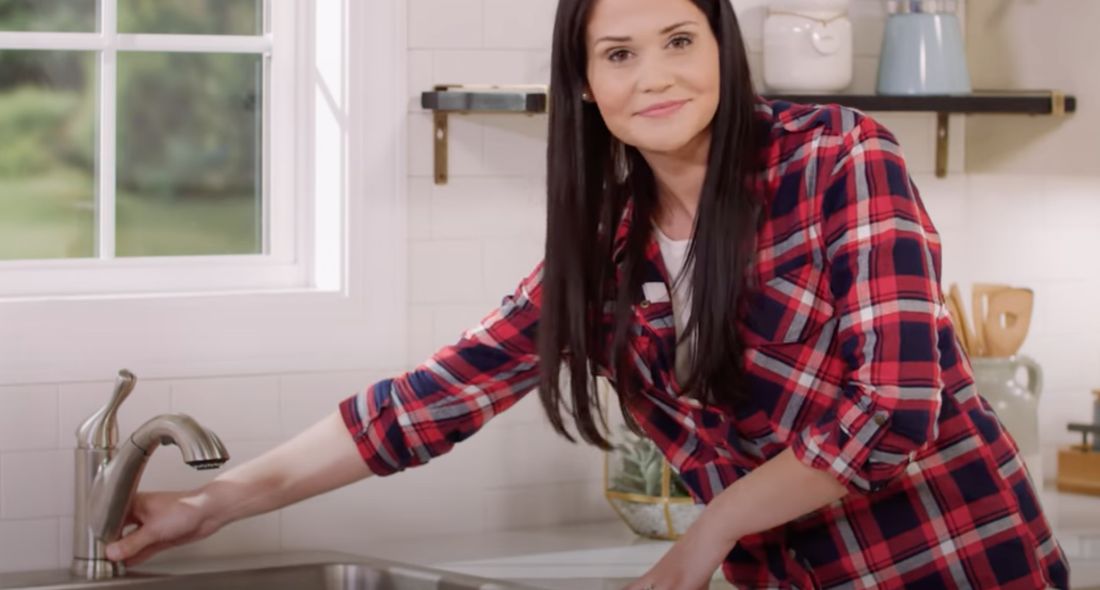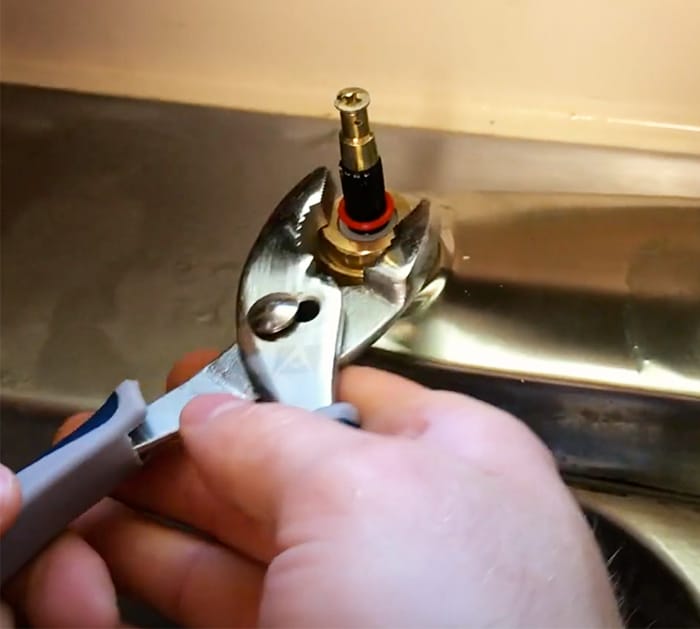Discovering the Relevance of Resolving a Faulty Faucet
Discovering the Relevance of Resolving a Faulty Faucet
Blog Article
On this page further down you can locate some outstanding information and facts regarding 4 Common Reasons for a Leaky Faucet.

Dripping taps could look like a small aggravation, yet their impact exceeds simply the aggravation of the sound. From drainage to incurring unnecessary economic expenses and health dangers, disregarding a dripping tap can lead to different consequences. In this article, we'll delve into why it's important to address this usual house concern quickly and properly.
Waste of Water
Environmental Effect
Trickling taps contribute significantly to water waste. According to the Epa (EPA), a single faucet trickling at one drip per second can lose greater than 3,000 gallons of water annually. This not just pressures water sources but likewise impacts communities and wild animals based on them.
Financial Prices
Raised Water Costs
Past the ecological influence, trickling taps can pump up water expenses considerably. The collected wastefulness gradually equates right into greater utility expenses, which can have been stayed clear of with prompt repairs.
Possible Property Damages
Additionally, extended dripping can lead to harm to fixtures and surface areas surrounding the faucet. Water build-up can cause discoloration, deterioration, and even architectural issues if left neglected, leading to additional repair expenses.
Health and wellness Concerns
Mold And Mildew and Mold Growth
The continuous visibility of moisture from a leaking tap produces a perfect atmosphere for mold and mildew and mold development. These fungi not only endanger indoor air high quality yet additionally pose health dangers, particularly for individuals with respiratory system problems or allergic reactions.
Waterborne Conditions
Stationary water in trickling taps can end up being a breeding ground for bacteria and other pathogens, raising the threat of waterborne illness. Contaminants such as Legionella bacteria grow in stationary water, potentially leading to significant illnesses when consumed or inhaled.
Do it yourself vs. Expert Repair work
Advantages and disadvantages of DIY Repair
While some may try to take care of a dripping faucet themselves, do it yourself fixings include their very own set of difficulties. Without correct knowledge and tools, DIY efforts can exacerbate the issue or cause insufficient repair services, lengthening the problem.
Benefits of Employing a Specialist Plumber
Working with a professional plumber makes certain that the underlying source of the dripping tap is attended to efficiently. Plumbing technicians possess the expertise and tools to identify and repair faucet problems efficiently, saving time and reducing the risk of additional damages.
Step-by-Step Overview to Repairing a Dripping Tap
Tools Required
Before trying to deal with a trickling faucet, gather the essential tools, including a flexible wrench, screwdrivers, substitute parts (such as washing machines or cartridges), and plumber's tape.
Typical Tap Issues and Their Solutions
Determine the sort of faucet and the details problem creating the drip. Typical troubles include damaged washers, corroded valve seats, or defective O-rings. Describe manufacturer directions or online tutorials for step-by-step assistance on fixings.
Preventive Measures
Routine Maintenance Tips
To prevent leaking taps, do regular upkeep such as cleaning aerators, examining for leaks, and replacing worn-out parts quickly. Furthermore, think about setting up water-saving devices or upgrading to more efficient components.
Importance of Prompt Services
Addressing trickling taps as quickly as they're seen prevents more water waste and possible damages, eventually conserving both water and money in the long run.
Influence On Building Value
Perception of Well-Maintained Residential Or Commercial Property
Maintaining a building in good condition, consisting of addressing upkeep issues like dripping taps, boosts its perceived value and worth among potential purchasers or occupants.
Impact on Resale Worth
Features with well-kept plumbing components, consisting of taps, command greater resale worths in the property market. Resolving dripping taps can add to a favorable impact throughout home assessments and settlements.
Environmental Responsibility
Specific Payment to Conservation
Taking responsibility for dealing with leaking faucets aligns with more comprehensive initiatives toward water preservation and ecological sustainability. Every person's actions collectively make a considerable effect on maintaining valuable resources.
Sustainable Living Practices
By prioritizing timely repairs and adopting water-saving routines, individuals add to lasting living practices that profit both existing and future generations.
Verdict
Attending to a dripping tap surpasses simple benefit; it's an important step toward saving water, lowering financial prices, and safeguarding health and wellness and building. Whether through DIY repair work or specialist support, acting to deal with leaking taps is a little yet impactful method to promote responsible stewardship of sources and add to a much healthier, much more lasting future.
How to Fix a Leaky Faucet: Step-by-Step Repair Guide
A leaky faucet may seem like a simple annoyance, but if it's not fixed promptly, that leak could cost hundreds to potentially thousands. From water damage to mold, mildew, and high water bills, even a tiny leak can be catastrophic if left unattended. Damage like this can even affect the overall value of your home, so it's important to take the right approach for leaky faucet repair. You may need the help of a plumber in some cases, but we've got a few tips you can try on how to fix a leaky faucet before calling the pros.
Four Faucet Types
When you're learning how to fix a leaky faucet, the first step is knowing what kind of faucet you're working with! There are four common types.
Cartridge Faucets
Cartridge faucets come in one- or two-handled varieties. In one-handled cartridge faucets, hot and cold water combines in a single cartridge. In the two-handled versions, hot and cold water are controlled separately and mixed in the faucet.
Ball Faucets
Ball faucets have a single lever you push up and down to adjust the pressure and rotate to change the temperature. A slotted metal ball controls the amount of water allowed into the spout.
Compression Washer Faucets
They're the oldest type of faucet, but they're still used in many homes — especially older ones. Compression faucets have two separate handles that, when turned, raise or lower the washer that seals a water valve. This valve stops water from flowing through the faucet when it is turned off.
Disc Faucets
Disc faucets rarely need to be repaired due to their maintenance-free design. The water flow is controlled by two discs — the upper one raises and lowers against a fixed lower disc, creating a watertight seal. If your disc faucet starts leaking, you may need to replace the seals or clean residue buildup from the inlets.
Fixing a Leaky Faucet
Step 1: Turn Off the Water
Whether you're learning how to fix a leaky bathtub faucet or how to fix a leaky kitchen faucet, always turn off the water supply to your working area when you're fixing a leak. The last thing you want is a flood added to your list of things to fix.
Look for the shutoff valves below your sink or around the tub and turn them clockwise to stop the water flow. If your faucet doesn't have shutoff valves, you may need to turn off the water for the whole house. Check to make sure it's off by turning the faucet on. If nothing comes out, you're ready to start the repair.
Step 2: Take Apart the Faucet
How you disassemble your faucet depends on the type of fixture you have. You can use a flathead screwdriver to remove the caps on top of the handle or handles for cartridge and compression faucets. Inside, you should see handle screws. Unscrew these with a screwdriver to remove the handle.
Disc- and ball-style faucets will typically have an inlet screw near the handle, and removing that will reveal the interior of the faucet.
Detach the Valve Stem
For cartridge- and compression-style faucets, you'll see the inner valve stem or cartridge once you remove the faucet handles. If you have a compression faucet, unscrew the brass valve stem. If you have a cartridge faucet, pull out the cartridge. If your cartridge has been in place for a while, it may require some tools or extra force to remove it due to mineral deposits.
Examine and Replace Parts
Once you've removed the parts, check them out to confirm what needs to be replaced. You may see corroded rubber washers, O-rings, stems, or cartridges. On a ball-style faucet, check the seats and springs for damage.
If you need to repair a leaky disc faucet, check the inlet and seals on the lower disc.
Once you determine what parts must be replaced, visit your local hardware store. Bring the damaged parts with you to ensure you can purchase the correct components to replace them.
Clean Valves and Faucet Cavity
If you've removed a stem or cartridge, you may notice mineral buildup in the faucet's threads. Use white vinegar to clean the valve seat by soaking it for a few minutes, then scrub it away with a soft toothbrush and rinse with warm water. You can also clean the interior of the faucet in the same way.
Reassemble the Faucet
Once your faucet is cleaned and the required parts have been replaced, it's time to reassemble it. Put the pieces back together and slowly turn the water supply back on. Doing this slowly is crucial because too much initial water pressure can damage the new hardware you've just installed.
https://homewarranty.firstam.com/blog/how-to-fix-leaky-faucet

I recently found that blog posting on Why Is It Important To Fix Your Leaking Tap/Faucet? when browsing on the internet. Sharing is good. You just don't know, you will be helping someone out. Thank-you for taking the time to read it.
Report this page